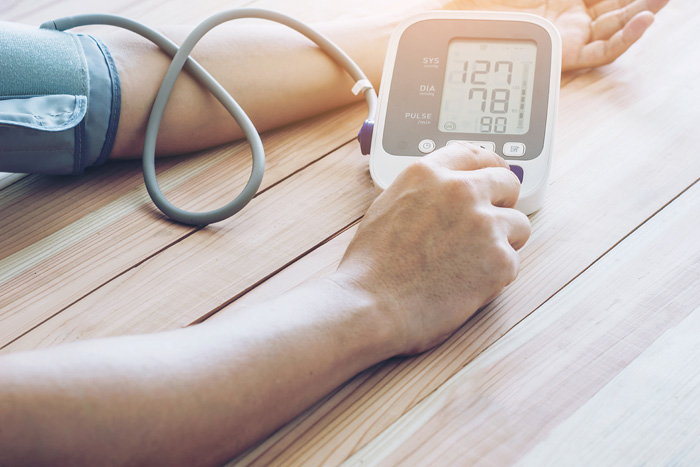Health monitoring devices are mostly simple electronic equipment which help us to monitor various health parameters such as blood pressure (BP), blood glucose (BG), body mass index (BMI) or even our heart rate (HR).
They are beneficial for those who are borderline or already diagnosed with certain medical conditions such as hypertension (HTN) and diabetes mellitus (DM). These health monitoring devices assist in self-monitoring one’s condition and track their progress of reaching their target goals.
For individuals without the above stated medical conditions, health monitoring devices can act as a basic screening method for early detection, especially for elderly who are more prone to these diseases. These individuals can be referred for further diagnosis and can be treated early to prevent further complications.
Health monitoring devices are also useful for ladies who are pregnant and are at risk of gestation HTN and DM which may occur only during pregnancy.
1. Monitoring devices measuring BMI

There are weighing scales which will measure weight and after manually imputing height, calculate BMI. (There are also advanced BMI machines that can measure both weight and height and thereafter calculate BMI accordingly.)
< 18.5 kg/m2 | 18.5 – 23.0 kg/m2 | > 23.0 kg/m2 |
|---|---|---|
May be a sign of nutritional deficiency and increase risk of osteoporosis | Healthy target | Higher risk of obesity related disease, such as Diabetes, Hypertension & Dyslipidemia |
The reason why we measure BMI is because BMI serves as a good general parameter to determine obesity and risk of related health conditions. BMI can help to monitor if our weight is within target, hence suggesting whether we should exercise more to decrease our weight, or build up more muscle mass to gain weight back to target range.
However, it is still important to take note that BMI only takes into consideration the weight measurement, and not the fat percentage and muscle mass. A healthy athletic man may have a high BMI due to his high muscle mass.
2. Monitoring devices measuring blood pressure & heart rate
Blood pressure monitors to measure BP are most commonly used by individuals diagnosed with HTN to monitor their condition closely as advised by their doctors. All devices measure both the systolic BP (pressure on the arteries when the heart contracts) and the diastolic BP (pressure when the heart relaxes). Both values are used to determine if one has hypertension. If the systolic BP exceeds 140mmHg and/or the diastolic BP exceeds 90mmHg for multiple measurements at different time points, there is a possibility of having HTN and one is advised to consult a doctor. The usual BP goal for HTN patients is less than 140/90mmHg. However, the goal could be stricter; less than 130/80mmHg if the patient has co-existing conditions such as DM or proteinuria (protein in the urine).
For measurement of BP, we consider the mercury sphygmomanometer with the use of a stethoscope to be the gold standard. However, concerns regarding toxicity and safe disposal have led to decreased use of mercury instruments worldwide. The next type is the aneroid sphygmomanometer, which also requires use with a stethoscope and is usually used by doctors who have been trained. These two types are thought to have a better accuracy than the last type of device which works via automation.
Automated BP monitors, widely available commercially, are extremely user-friendly and can easily be used even by the elderly with minimal training. It is very suitable for home settings, and it recommended that patients do daily monitoring of their BP to have a better understanding of their own condition. The best time to measure BP is to do it every morning for consistency. For devices with the memory function, patients can review their readings to mark a trend and monitor if their condition is well-controlled. It is suggested that patients should bring along their home BP monitors whenever they have their regular visits to the doctor.
Most of the automatic BP devices can also measure HR. There are also devices such as watches or portable heart rate monitors which can be worn during exercise to monitor one’s HR. HR is usually defined as the number of times the heart contracts in one minute. It can be used to determine how vigorous an exercise/activity is, and whether we are exercising sufficiently. We should aim to have at least 75 minutes of vigorous activity or 150 minutes of moderate activity per week in order to keep the body healthy.
Determination of exercise intensity by HR:
– Subtract your age from 220 to get your maximum heart rate.
– Vigorous activity:70 – 85 percent of maximum heart rate
– Moderate activity: 50 – 70 percent of maximum heart rate
– Light activity: 40 – 50 percent of maximum heart rate
3. Monitoring devices measuring blood glucose
There are many devices in the market which can measure BG and are usually recommended for patients who are diagnosed with DM. By using the devices, patients are able to detect whether their basal (fasting) BG and/or 2h post-meal BG need to be corrected and thereby helping doctors in deciding the appropriate medication dosing regimen. In addition, some patients self-titrate their insulin levels according to their measured BG level. By closely monitoring and controlling their BG, patients can have a lower risk of microvascular and macrovascular complications. BG measurement is a better indicator of DM than urine dipsticks which measure glucose in the urine and will only be detectable at much higher levels of glucose in the body. Thus, BG measurement will allow for earlier detection of DM and thereby allowing for quicker treatment.
For all devices measuring BG, the usage is generally the same, with different brands and models operating only slightly differently. For some older devices, it requires changing of the code chip for every new bottle of strips used. Test strips are usually brand-specific and model-specific. It is also important to note the expiry of the strips as they may give inaccurate readings once expired. Certain brands of test strips have a shortened shelf-life once a new bottle of test strip is opened. Test strips and lancets should be discarded after every use for hygiene purposes. Lancets especially, should be discarded appropriately after use to prevent hurting one self and others. Certain brands have their own safety features for their lancets and lancing devices. There are many types available commercially and the choice depends on frequency of use, budget, and individual capabilities.
To have a better grasp of their condition, one should monitor their BG a few times each day and a more regular monitoring regimen can help determine if the condition is well-controlled.
Want to find out more?
Reference
- Obesity and BMI. (2019, August 20). Retrieved from https://www.healthhub.sg/a-z/diseases-and-conditions/218/obesity
- Is My Weight Putting Me at Risk of Health Problems?. (2019, April 3). Retrieved from https://www.healthhub.sg/live-healthy/179/weight_putting_me_at_risk_of_health_problems
- Understanding Blood Pressure Readings. (2017, November 30). Retrieved from http://www.heart.org/HEARTORG/Conditions/HighBloodPressure/AboutHighBloodPressure/Understanding-Blood-Pressure-Readings_UCM_301764_Article.jsp
- Monitoring Your Blood Pressure at Home. (2017, November 30). Retrieved from http://www.heart.org/HEARTORG/Conditions/HighBloodPressure/SymptomsDiagnosisMonitoringofHighBloodPressure/Home-Blood-Pressure-Monitoring_UCM_301874_Article.jsp.
- Shahbabu, B., Dasgupta, A., Sarkar, K., & Sahoo, S. K. (2016). Which is More Accurate in Measuring the Blood Pressure? A Digital or an Aneroid Sphygmomanometer. Journal of clinical and diagnostic research : JCDR, 10(3), LC11–LC14. doi:10.7860/JCDR/2016/14351.7458
- Benjamin, E. M. (2002). Self-Monitoring of Blood Glucose: The Basics. Clinical Diabetes, 20(1), 45–47. doi: 10.2337/diaclin.20.1.45










